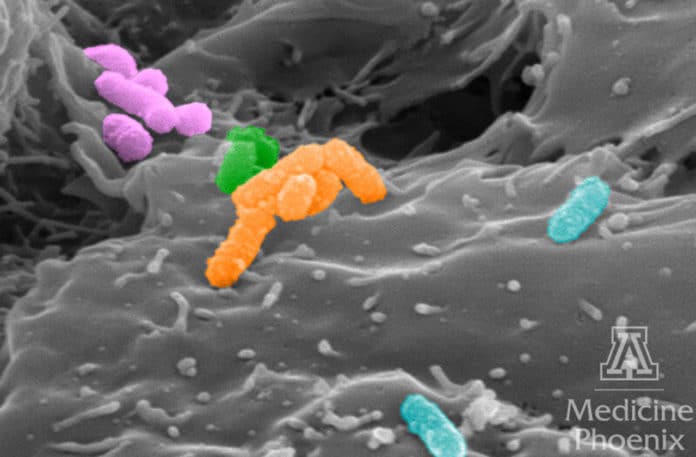Bacterial vaginosis (BV), also known as vaginal bacteriosis, is the most common cause of vaginal infection for women of childbearing age. As predicted, BV is caused by an imbalance of naturally occurring bacterial flora, the usual bacteria found in a woman’s vagina. Why this happens is not clear.
A new study determined if the novel cytokine (IL-36y) was elevated in women with BV.
The study conducted under the guidance of Melissa Herbst-Kralovetz, Ph.D., an associate professor in the Department of Basic Medical Sciences at the College of Medicine-Phoenix and Emory University and the CDC. A team of UArizona College of Medicine-Phoenix investigators, including Pawel Laniewski, Ph.D., a research scientist, and Jameson Gardner, a graduate research student, both members of Dr. Herbst-Kralovetz’s lab also collaborated in the study.
For the study, scientists examined cervicovaginal epithelial cells collected from women with and without bacterial vaginosis. By profiling the microbiome in women with and without BV, scientists determined if the novel cytokine (IL-36y) was elevated in women with BV. They then sorted several bacterias that are highly associated with BV and prevalent in clinical studies to infect in a human 3D cervical epithelial cell model.
To better understand the potential contributions of specific bacteria to changes in immune activity, scientists used a reductionist approach that involves measuring IL-36y levels. The approach starts from the simplest level. It works upward in complexity, with the idea that isolated molecules, or in this case, bacteria, have the power to provide an understanding of the entire system.
Gardner said, “We found that infection with BV-associated bacteria-induced IL-36y in a species-specific manner, and that infection with a polymicrobial mixture of the BV-associated bacteria-induced IL-36y at a level greater than infection with any single bacterial species alone.”
Dr. Laniewski said, “the study brings researchers “closer to better understanding how different microbes commonly found in women with BV contribute to the activation of specific components of our immune system, which can relate to disease incidence and recurrence.”
The study has shown that IL-36y is an essential regulator of inflammation in the female reproductive tract. Besides that, scientists investigated the role of IL-36y in the immune response to the herpes infection. They demonstrated that IL-36y is elevated in cervical cancer. Collectively, they hypothesize this research can have broad implications with other bacterial and viral sexually transmitted infections and gynecologic diseases, including cancer.
Scientists noted, “we don’t necessarily know the role IL-36y may play in these diseases, but many of them cause or are driven by and exacerbated by the inflammatory response. Therefore, IL-36y could be an important mediator of the response to disease.”
The study is reported in the journal of Infectious Diseases.
